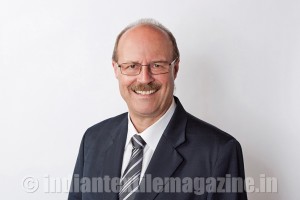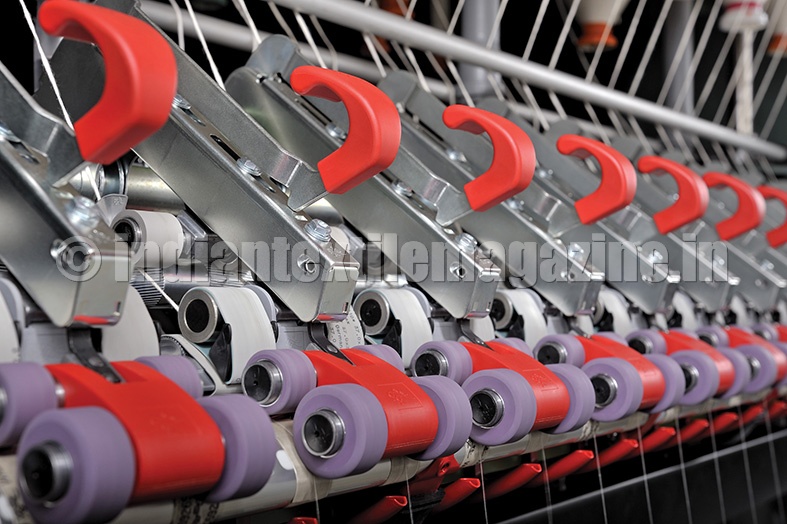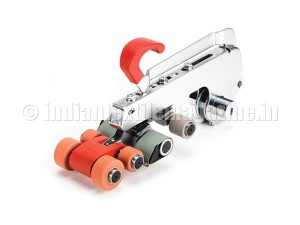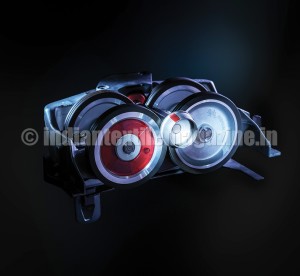By Peter Stahlecker, Managing Director, Suessen Fabrik
ITMA, the largest trade show of the global textile machinery, is held once every four years. The acronym stands for “Internationale Textilmaschinen-Ausstellung”, which in German means international textile machinery exhibition. The fact that ITMA is a German, as opposed to, say, English acronym shows the importance the German-speaking countries attached to the textile machinery trade.

Today, Germany and Switzerland still produce and export large amounts of textile machinery, but competition, mostly from China and India, is getting fiercer. Will there still be a place for German and Swiss textile machinery, or will they be brushed away by the competition?
Nobody can predict the future. Still, for the foreseeable future, I feel confident there will be a place for German and Swiss textile machinery. Why?
* Textile machinery, at least the machines I am familiar with, usually have many production positions on one machine (e.g., a ring spinning machine) and / or the mill has many identical machines (e.g., cards). All these positions or machines should make a final product with minimal variation. Germany and Switzerland have, what I feel, an almost unique system. The apprentice system guarantees that young men and women thoroughly learn their trade, whatever it may be. Naturally, this translates into machines with minimum variation, the output hence has minimum variations, too.
* The development of textile machinery is very much an ‘applied science’. We rarely employ people with a degree in theoretical physics, but what we need are bright young people with good education, including good manual skills. These manual skills are needed to perform test and trials on the spot, in the laboratory and with customers. People who have undergone an apprenticeship as mentioned above are ideal.
* Some German and Swiss companies have moved labor-intensive operations into lower-cost countries, or have moved to more automation in the production process, to make them more cost competitive. Which route to take of course depends on the machine and component one wants to make. SUESSEN has chosen the route of higher automation.
The textile machinery industry is a very mature one. It makes it harder to develop truly new ‘things’. Still, we are all working on it, and every once in a while we hit on something new. The so-called nose reducing spindle, developed by NOVIBRA years ago, and sold under the trade name of NASA was such a true novelty. The BRÄCKER Titan ring is probably in a similar category. More recently compact spinning, developed primarily by RIETER and by SUESSEN, has accounted for a small revolution in the spinning industry.
An issue of concern to those of us who spend large sums on R&D is the illegal use of intellectual property rights, commonly called copying. There is nothing charming about copying, it is simply theft! Copying has taken place ever since I entered our industry some 35 years ago, but I have never seen it pursued as relentlessly as today. Some countries are more responsible than others, and customers who buy copies are responsible as well. On top, these customers discourage genuine R&D work, ultimately to their own disadvantage. Here we should all go back to better, more honest standards of doing business.
After having talked about the opportunities and concerns of the textile machinery industry, let me turn to the industry of our customers, the spinning mills.
There is no doubt in my mind that the textile industry is here to stay! One can live without mobile phone (even though the young generation has trouble believing this!), but one cannot live without cloths and other textile products.
While my customers produce what we can call a commodity; this does not mean at all that they have become complacent – in fact, the opposite is true:
* They constantly think about adding value to their product. Compact spinning is such a route, and my customers have embraced it and have bought record numbers of EliTe Compact spindles.
* They think about producing yarn for fashion products. It seems that Be 40/2 EliTwist is a hot product for the denim industry.
* They actively look for products which use less energy. This is good for two reasons, for their bottom line and for the environment.
* They utilize labor more efficiently. Again, this is good for their bottom line and good for social welfare.
A frequently asked question is, where on the globe tomorrow’s textile industry will be. My observation over the past 30 years is that Latin America has moved laterally at best, and Africa has moved backwards or laterally at best, I feel that the textile industry will remain predominantly in Asia, and, of course, individual countries in those regions may show different trends.
For instance, in India Rieter’s production volume will reach an all-time high in 2015, is thanks to the customers, who show their appreciation of Rieter’s convincing portfolio of products and services.
To sum it up: My customers will remain mostly in Asia, and they will thrive there. They will become still more efficient in all aspects, even more in tune with the fashion trends worldwide, and they will create even more desirable jobs, thus lifting the welfare of the countries where they operate.


